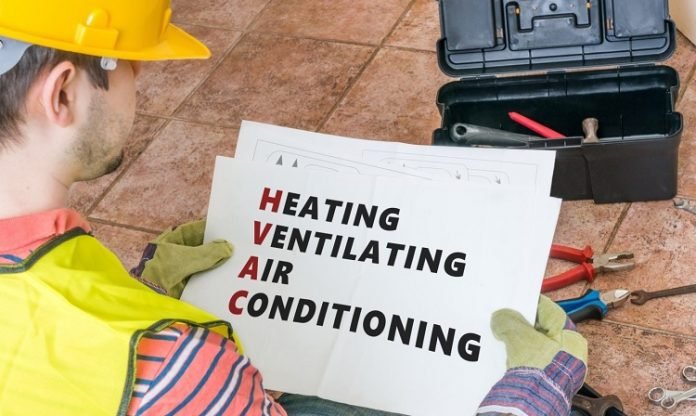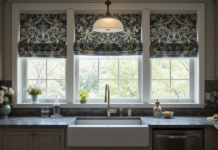Last Updated on January 29, 2022 by
Do you need a new residential HVAC? And are you getting overwhelmed by the astounding number of HVAC systems you have to choose from?
If so, it’s tempting to replace your current system with an identical model just to make the decision easier. This is never a good idea.
For one thing, if your current system is worn out, that means it was installed about 10 years ago. Thus, it’s based on technology that is inefficient and outdated by today’s standards.
On the other hand, perhaps you’re replacing it because it was always inefficient, even from day one. So, why buy the same one again?
Truthfully, it’s vital that you take time to consider your options. Fortunately, we’re going to help you with that.
The following guide explains all the heating and cooling systems that the HVAC industry has to offer. Read on to learn all about your options.
Table of Contents
Types of Air Conditioners
First, we’ll look at a few variations of air conditioning systems. All of these air conditioner types are still in use today.
1. Swamp Cooler
Swamp coolers are based on ancient technology that uses evaporating water to cool down your house. You see, water gets colder when it evaporates. You feel this effect when the wind blows on your wet skin.
Swamp coolers simply control this reaction to apply the cooling effect to your indoor air. Naturally, though, this adds a lot of moisture to the air it cools. So, if your house is normally very humid, it’s not a good idea to get a swamp cooler.
2. Central Air Conditioning
Central air conditioning is the system that most residences and commercial buildings use. Also, this technology acts as a dehumidifier, removing moisture from the air.
Centralized AC consists of two units working together. The indoor unit is called the evaporator and the outdoor unit is the compressor.
To cool your indoor air, the outdoor unit sends cold refrigerant to the indoor unit. The refrigerant pulls heat from the indoor air and takes it back outside to the compressor. Then, the compressor compresses the refrigerant, which makes it cold once again.
Meanwhile, the indoor air that is cooled by the refrigerant is pushed through the duct system by the fan. Lastly, the cooled air comes out of the supply vents and into each room of your house.
3. Mini-Split HVACs
The technology of mini-split HVAC systems is very similar to central AC. Except, there are multiple indoor units that all connect to one outdoor unit.
Each room has its own evaporator unit/fan. Thus, these systems have no need for ducts.
This upgraded technology is significantly more energy-efficient, for several reasons.
- The fans are small so they require little energy
- The house cools faster and more efficiently so you won’t run the AC as much
- You don’t have to overuse the AC to cool that one room that’s always hotter than the others
- You can shut off the indoor units in rooms that aren’t being used
- No energy is lost due to leaky ducts
These systems are also very convenient because the temperature of each room is controlled separately. Since everyone can choose the temperature of their own room, no one has to fight for control of the thermostat.
4. Single-Room Air Conditioners
A lot of AC systems contain both the compressor and the evaporator within a single unit. These or only adequate for cooling a single room or a very small apartment.
Window AC systems, for example, sit in the window, half in and half out of the building. From there, they can send the heat out of the building and blow cooled air into the building at the same time.
Wall-mounted AC systems work the same way. Except they are installed into a wall rather than a window.
There are also “portable” AC systems that you can install into any room without professional help. Of course, they’re not very portable once they’re installed.
You’ll need to attach the exhaust port to a hole in your wall or a partially open window. This is necessary to let the heated air out of the building.
For more help deciding on the ideal air conditioner, speak to a professional HVAC installer in your area, like this AC company here.
Types of HVAC Systems For Heating
Now let’s look at your heating options. The 3 main types are furnaces, boilers, and space heaters.
1. Space Heaters
Space heaters are mobile, single-room heaters that you can put in any room you want. Unlike single-room AC units, they are not permanently installed. So you can pick them up and move them from room to room with ease.
2. Furnaces
Furnaces typically burn gas or oil to heat your indoor air. Although, some use electric heating elements. The heated air is distributed throughout your home via your HVAC’s duct system.
3. Boilers
Boilers use steam or hot water the same way that your central AC uses refrigerant. The air absorbs heat from the water, and the water is then heated back up. These systems tend to be more problematic than furnaces.
Other HVAC Systems
Lastly, there are a few combination HVAC systems that can heat and cool your home. These are extremely energy-efficient.
1. Hybrid HVACs
In summer, hybrid systems work a lot like central AC. But in the winter, they reverse the normal cycle to heat your home instead. These systems use a combination of electricity and fossil fuels.
2. Geothermal HVACs
In winter, geothermal HVACs draw heat from deep underground to heat your home. And in the summer, the system takes the heat from your indoor air and deposits it into the cool earth below.
Which HVAC Systems Are You Considering?
Have you decided which HVAC systems would be best in your house? If not, that’s okay. Just keep this guide for reference so that you can take your time to decide.
Next, learn how to take better care of your lawn or how to increase your home value before selling. Check out our Home Improvement archives for plenty of helpful guides like these.
Read more: What is HVAC? What do HVAC repair specialists do?



























